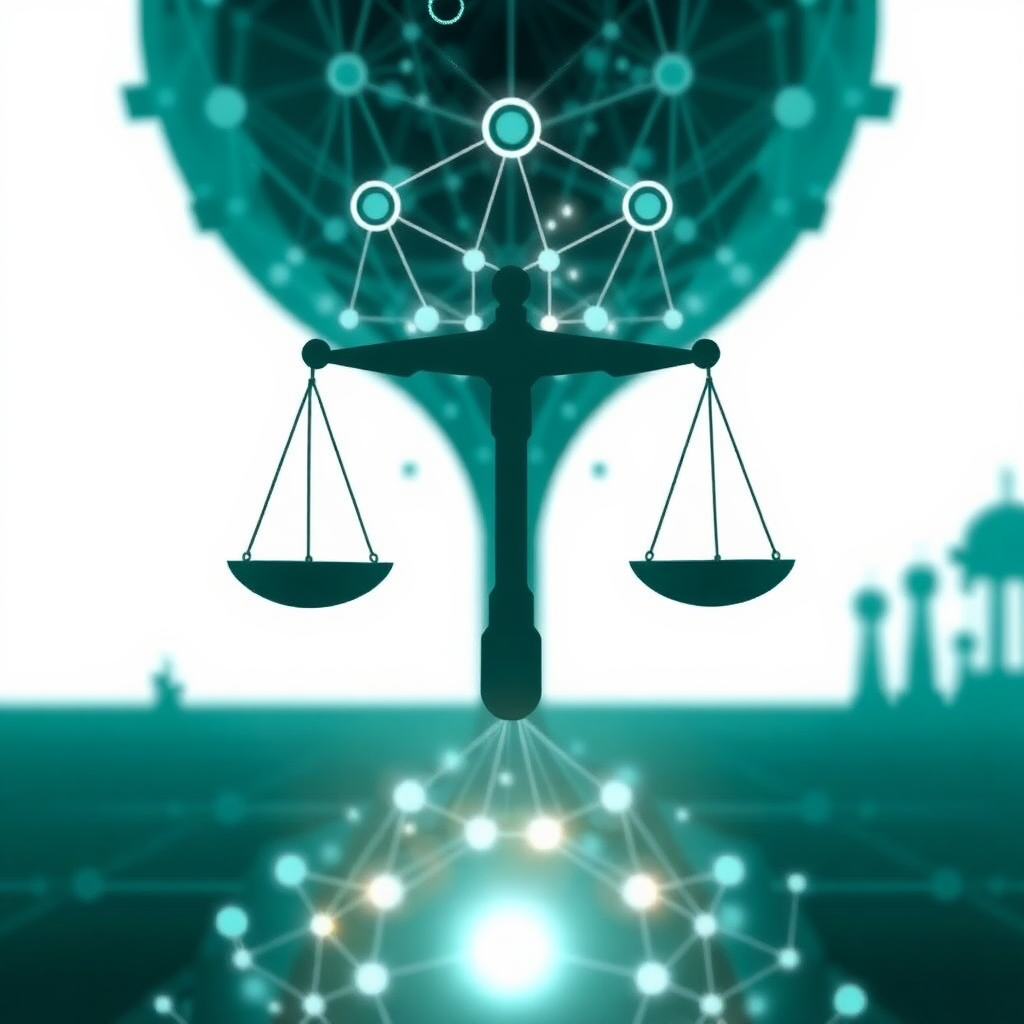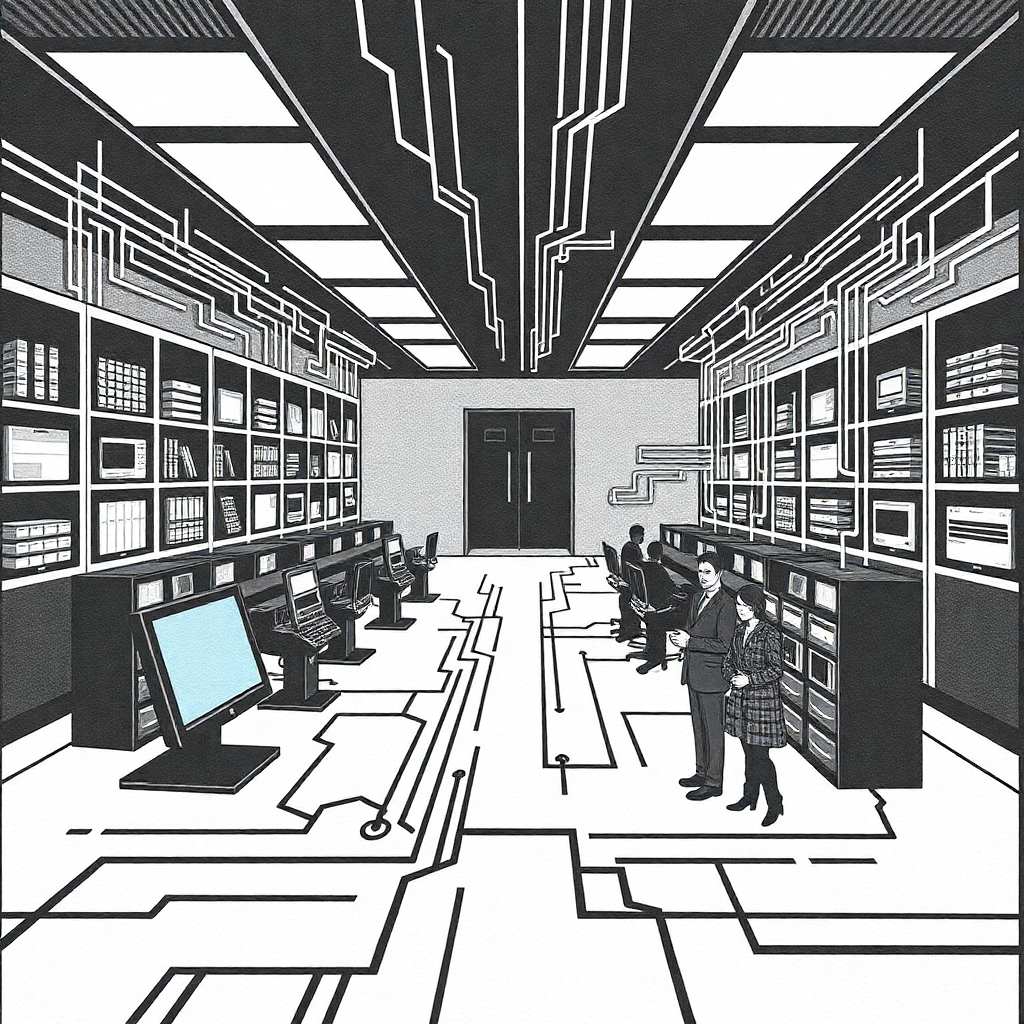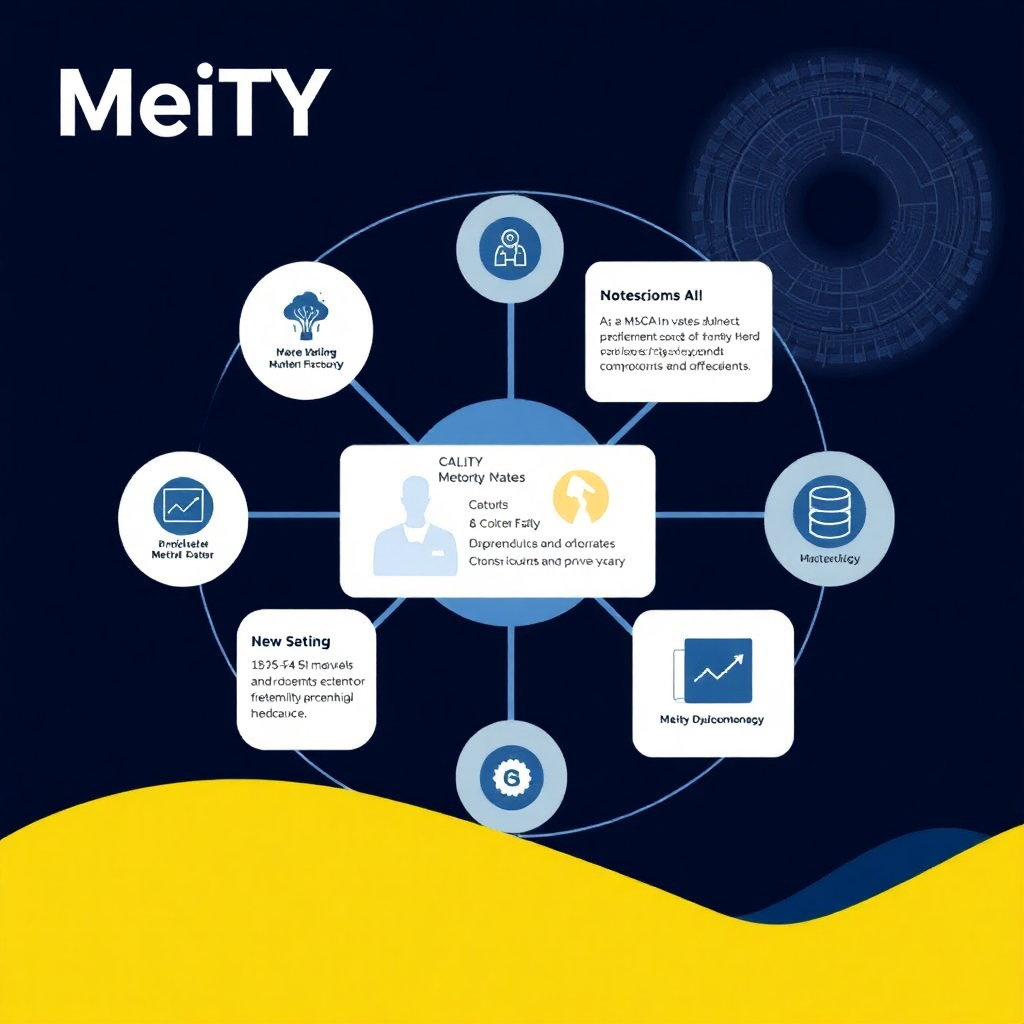Table of Contents
ToggleAbstract
Artificial Intelligence (AI) has emerged as a transformative force in India, revolutionizing industries from healthcare to finance while simultaneously raising complex legal and constitutional challenges.

This article examines India’s evolving AI legal landscape, exploring the intersection of AI technology with constitutional principles under Articles 14 and 21, the current regulatory framework including the Digital Personal Data Protection Act 2023 and MeitY’s AI guidelines, and the growing body of judicial interpretations addressing algorithmic decisionmaking. The analysis addresses critical issues of liability in autonomous systems, data privacy protection, intellectual property rights, and employment law implications. Through comparative analysis with international frameworks including the EU AI Act and GDPR, this article argues for a comprehensive, rights-based approach to AI governance that balances innovation with fundamental constitutional guarantees of equality, privacy, and due process.
Introduction
Artificial Intelligence represents more than technological advancement—it embodies a paradigm shift that challenges traditional legal concepts of agency, responsibility, and rights. In India, where AI adoption is accelerating across sectors through initiatives like the IndiaAI Mission with its USD 1.25 billion investment, the legal system faces unprecedented questions about algorithmic accountability, data protection, and constitutional compliance.
This technological revolution raises fundamental questions: How do constitutional guarantees of equality under Article 14 apply to biased algorithmic systems? Can automated decision-making processes satisfy due process requirements under Article 21? What liability frameworks should govern AI systems that operate autonomously? Is India’s current regulatory approach sufficient to address AI’s multifaceted legal challenges, or does it require comprehensive legislative intervention similar to the EU AI Act?
Legal Framework
Current Regulatory Landscape
Information Technology Act, 2000
- Provides foundational framework for digital technologies, including AI systems through broad definition of “computer resources”
- Governs electronic data protection, cybersecurity, and digital transactions
- Set to be replaced by the proposed Digital India Act 2023

Digital Personal Data Protection Act (DPDP), 2023
- Primary legislation governing personal data processing by AI systems
- Establishes rights for data subjects including access, correction, and erasure
- Grants broad government exemptions potentially compromising individual privacy rights
- Limitations: Lacks AI-specific provisions for algorithmic bias or automated decision-making accountability
MeitY AI Guidelines (March 2024)

- Revised advisory removing mandatory government approval for AI deployment
- Requires intermediaries to ensure AI systems don’t enable unlawful content sharing
- Mandates proper labeling for AI-generated content and deep fake detection measures
- Applies primarily to significant social media intermediaries and platforms
Sectoral Regulations
- Consumer Protection Act, 2019: Section 83 creates manufacturer liability for AI-generated product defects
- Factories Act, 1948: Limited provisions for robot safety standards in industrial settings
- Copyright Act, 1957: Governs AI-generated intellectual property, though lacks specific AI provisions
Constitutional Principles & Judicial Role
Fundamental Rights Framework
Article 14 – Equality Before Law
- Supreme Court’s expansion from formal equality to substantive equality in E.P. Royappa v.
State of Tamil Nadu (1974)
- Doctrine of non-arbitrariness: algorithmic opacity and bias may constitute arbitrariness violating Article 14
- Emerging jurisprudence on algorithmic discrimination as indirect discrimination affecting marginalized groups
Article 21 – Right to Life and Personal Liberty
- Encompasses right to privacy (Justice K.S. Puttaswamy v. Union of India, 2017)
- Due process requirements challenge algorithmic “black box” decision-making
- Transparency and accountability as essential elements of fair legal procedures
Article 25 – Freedom of Religion
- Potential tensions with AI systems used in personal law matters
- Balancing religious autonomy with technological standardization
Judicial Initiatives and AI Integration
Supreme Court AI Applications
• SUPACE (Supreme Court Portal for Assistance in Court’s Efficiency): Experimental AI tool for case analysis and precedent research

- AI-assisted transcription: Deployed for Constitution Bench oral arguments since February
2023
- Translation services: AI-powered translation of judgments into 18 Indian languages with 36,271 Supreme Court judgments translated into Hindi and 17,142 into other regional
languages
Defect identification: AI integration with electronic filing systems in collaboration with IIT
Madras[10]
Judicial Constraints on AI Decision-Making
- Clear distinction maintained: AI for information processing and analysis, not judicial decision-making
- Preservation of judicial autonomy and discretion in final determinations
- Recognition of AI bias risks based on international experiences
Contemporary Issues in Indian AI Laws
1. Liability and Accountability Frameworks
Autonomous System Liability
- Gap in comprehensive legislation addressing AI system liability when errors occur
- Current reliance on general tort principles and vicarious liability concepts
- Need for “shared liability frameworks” distributing responsibility among developers, manufacturers, and users
Algorithmic Bias and Discrimination
- Growing concerns over AI systems inheriting and amplifying historical biases[16][7]
- Employment discrimination cases like Mobley v. Workday highlighting algorithmic hiring
bias challenges[17][18]
- Lack of specific anti-discrimination legislation for AI-powered decision-making
2. Data Privacy and Protection
DPDP Act Limitations
- General framework inadequate for AI-specific data processing challenges
- Broad government exemptions undermining privacy protections
Absence of explicit mechanisms for AI audit and algorithmic accountability
Surveillance and Facial Recognition
- Rapid expansion of AI-powered surveillance infrastructure without comprehensive legal safeguards
- Facial recognition systems deployed across law enforcement lacking oversight mechanisms
- Constitutional implications under Articles 14 and 21 for biased recognition technologies
3. Intellectual Property Challenges
AI-Generated Content Ownership
- Current IP laws lack clarity on ownership of AI-generated works
- US Copyright Office position: AI-generated content lacking human authorship not copyrightable
- Patent challenges: DABUS case establishing AI systems cannot be legal inventor
Training Data and Copyright
- Legal uncertainties around use of copyrighted material in AI training datasets
- Fair use considerations remain contentious with ongoing litigation
- Need for clear data licensing frameworks for AI development
4. Employment Law Implications
Algorithmic Hiring and Workplace Monitoring
- AI recruitment tools raising bias and discrimination concerns[21][19]
- Employee monitoring through AI technologies creating privacy issues[19]
- Lack of specific employment law provisions addressing AI workplace integration[5]
Job Displacement and Automation
Mass layoffs due to AI automation requiring legislative attention
- Need for retraining and reskilling frameworks for displaced workers
- Balancing technological advancement with worker protection
5. Cybersecurity and AI-Enabled Crimes
AI-Assisted Cybercrimes
- Sophisticated deepfake technologies enabling fraud and misinformation
- AI-powered social engineering attacks challenging traditional cybersecurity laws
- Autonomous cyber weapons raising questions of attribution and state responsibility
Regulatory Gaps
- Existing cybersecurity laws inadequate for AI-driven threats[23][24]
- Need for updated frameworks addressing AI’s role in both committing and combating cybercrimes
Comparative Perspective
European Union – Comprehensive AI Regulation
EU AI Act (2024)
- World’s first comprehensive AI regulatory framework with risk-based approach
- Prohibits unacceptable risk AI uses (social scoring, manipulation)
- Strict governance requirements for high-risk AI systems including healthcare and finance
- Maximum fines up to 7% of annual turnover or EUR 35 million
GDPR Integration
- Complementary framework addressing personal data in AI systems[28][27]
- Article 22 rights regarding automated decision-making[7]
- Data protection impact assessments (DPIAs) for high-risk AI processing[29][30]
United States – Sectoral Approach
Executive Orders and Guidelines
- Executive Order 14179 (2025): “Removing Barriers to American Leadership in Artificial
Intelligence”
- Emphasis on maintaining US AI leadership while addressing bias concerns
- Federal agency oversight for AI use in civil rights and national security
Emerging Litigation Landscape
- Mobley v. Workday: Landmark algorithmic bias discrimination case
- Federal courts recognizing AI vendor liability as employment agency “agents”
- California’s automated decision-making regulations (March 2025)
Other Jurisdictions
United Kingdom
- Pro-innovation framework with five core principles: fairness, transparency, accountability, safety, contestability
- Flexible, context-driven approach without heavy compliance burdens
France and Turkey
• Marriage governed solely by secular law providing comparative perspective for AI in personal law matters[sample reference]
Conclusion
India’s approach to AI governance reflects a tension between technological innovation and constitutional compliance, regulatory certainty and adaptive flexibility. While the current framework provides foundational protections through the DPDP Act and MeitY guidelines, it falls short of addressing AI’s systemic challenges comprehensively. The absence of specific AI liability frameworks, inadequate algorithmic accountability mechanisms, and limited protection against automated discrimination create significant regulatory gaps.
Moving forward requires a multi-pronged approach: expanding constitutional interpretation to address algorithmic arbitrariness under Article 14, developing comprehensive AI liability regimes similar to EU models, and ensuring AI systems deployed by the State meet due process standards under Article 21. The Supreme Court’s cautious integration of AI tools while maintaining human decision-making authority provides a constitutional template for broader AI governance.
Any regulatory evolution must balance India’s innovation aspirations with fundamental rights protection, learning from international experiences while respecting India’s constitutional values and diverse social fabric. The path ahead demands proactive judicial recognition, comprehensive legislative intervention, and continuous stakeholder engagement to ensure AI serves as a tool for constitutional progress rather than digital discrimination.
References / Citations
- Drishti IAS. (2024). AI and India’s Legal Landscape.
- American Chase. (2025). Generative AI Regulations in India: Must-Know These in 2025.
- MineOS. (2025). AI Governance Framework: Key Principles & Best Practices.
- Trigyn. (2025). Intellectual Property Issues in AI: Navigating a Complex Landscape.
- International Association of Privacy Professionals. (2024). Global AI Governance Law and Policy: India.
- AI21 Labs. (2025). 9 Key AI Governance Frameworks in 2025.
- Diplomacy.edu. (2025). AI-generated content and IP rights: Challenges and policy considerations.
- Carnegie Endowment. (2024). India’s Advance on AI Regulation.
- Various Parliamentary Documents on AI in Supreme Court Case Management.
- CMR University. (2025). AI, Ethics, and the Law: Navigating New Frontiers in Intellectual Property.
